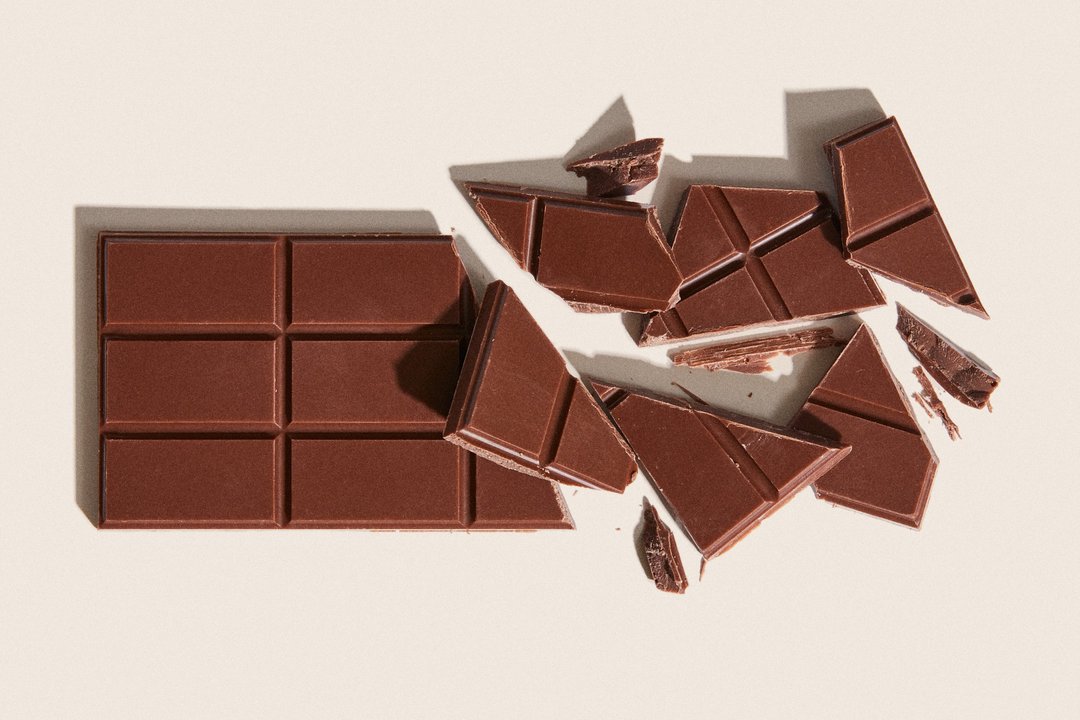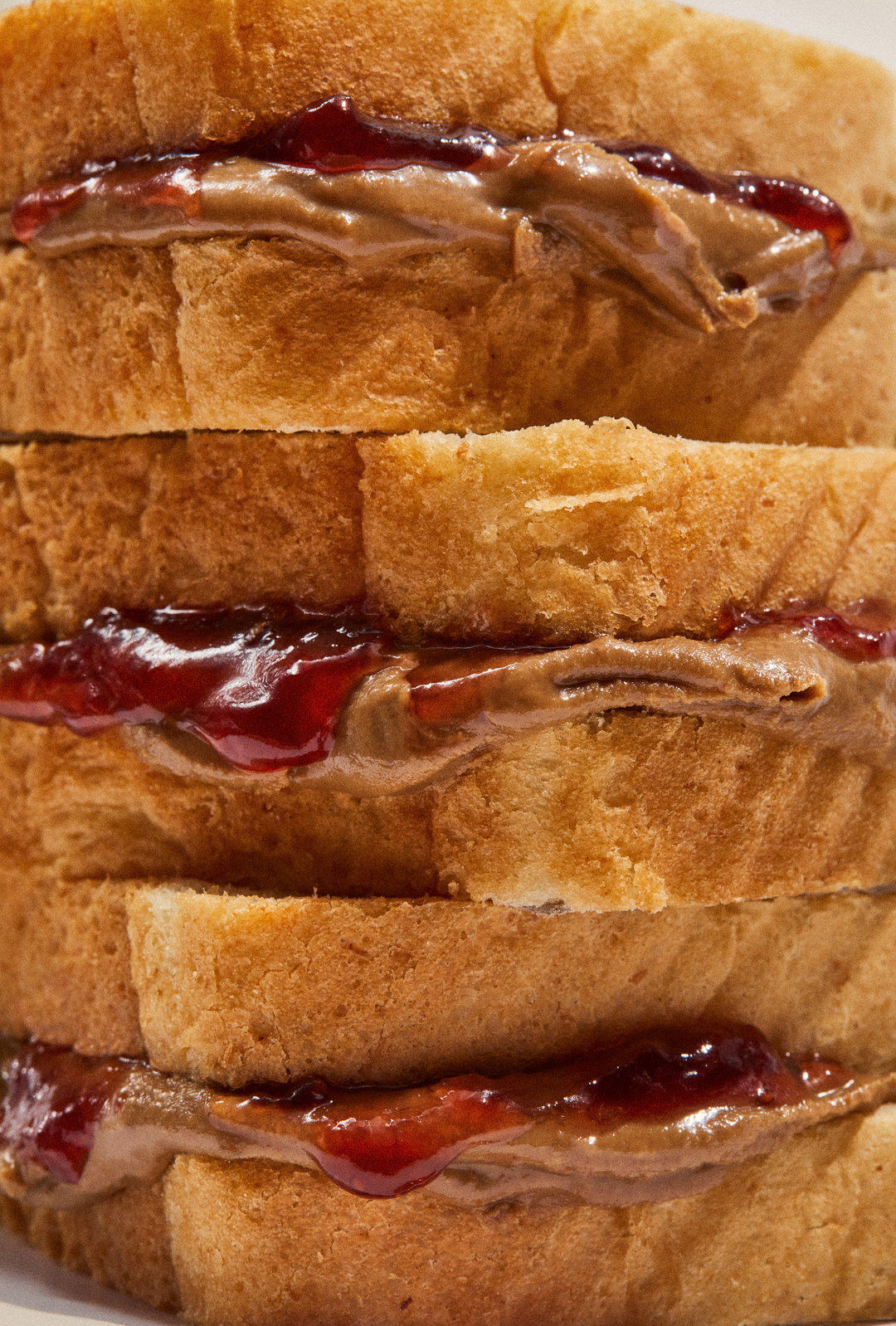No bean, no problem: Brands race to develop alternatives to chocolate and coffee
Meat, fish and dairy have been the focus of alt-food producers, but these are far from the only food products that present a problem for people and planet.

Voyage Foods is gearing up to launch chocolate-free chocolate, peanut-free peanut butter and coffee-free coffee this year. (Photo: Voyage Foods)
FREE-FROM FOODS
Chocolate will be flying off the shelves this weekend, as people shop for Easter eggs and bunnies. Last year, Easter confectionery sales in the U.S. hit $4 billion, while in the U.K. people spent £153 million on chocolate eggs (twice as much as they did in 2020).
But while it may appear to be all sweetness on retailers' shelves, the reality of the chocolate industry is very different.
In West Africa, where 70% of the world’s chocolate is produced, rising temperatures are leading to deforestation in order to make room for more cacao crops. Meanwhile, the mismatch between what we pay for our chocolate and what it actually costs farmers to produce the ingredients has led to child labor and modern slavery becoming a known feature of the chocolate supply chain. According to the National Confectioners Association, U.S. chocolate sales were up 9.2% year-on-year in 2021, reaching $22 billion.
Even Tony’s Chocolonely, a brand with an explicit anti-slavery stance, doesn’t seem to be able to root it out of its supply chain. In February, it admitted to finding 1,700 child workers in its supply chain.
Chocolate is a product that “most of us know and love, and think is fairly innocuous,” says Johnny Drain, the cofounder WNWN Food Labs, which is currently in the process of developing a cacao-free chocolate bar in London. “Unlike meat and milk, you wouldn’t pick it up and think ‘oh, somebody’s having a terrible life as a result of me buying this’.”
The alt-meat effect
With a cacao-free chocolate bar, concerns about hidden slave labor melt away. According to a recent article in Wired's U.K. edition, WNWN estimates its cacao-free bars to result in 85% less carbon emissions per kilo than the same amount of cacao beans.
“People now understand it costs a lot in energy to produce a unit of beef compared to a unit of yellow peas,” Drain says. “In the same way, there’s an outsized water consumption with cacao beans, and an outsized carbon footprint. [They] produce more CO2e per kilo than lamb and cheese.”
WNWN is not the only one trying to figure out how to go from no-bean to bar. In Germany, QOA has raised $6 million to bring its version of cacao-free chocolate to market at some point this year. It has already produced a "test kit" featuring nine chocolate truffles for people to provide feedback on. California Cultured, founded in 2020, is figuring out how to grow cacao cells in a lab, and scale this up to the point where it has a viable alternative for the type of cacao mass-market chocolate makers buy.
Voyage Foods has also raised around $6 million to bring three products to market throughout this year. As well as cacao-free chocolate, it’s also working on nut-free peanut butter and beanless coffee — another product with a creaking supply chain. Last year, coffee prices rose to a seven-year high after instances of disease, pests and wildly fluctuating temperatures have increased in the regions where it is grown. In the U.S., Atomo Coffee and Compound Foods are both working to bring coffee-free coffee to the market at scale.
Inspired by the likes of Impossible Foods, these brands are hoping they can not only come up with I-can’t-believe-it’s-not alternatives for some of the world’s most-loved foods, but that they can get people to actually consume them en masse, too. After all, just like veggie burgers existed before Impossible, carob and chicory have all been around for a long time.
“Some of the largest food companies in the world have been working on making cacao-free chocolate since World War Two, when there were monster supply chain disruptions,” points out Adam Maxwell, the founder of Voyage Foods.
Those attempts never quite succeeded, he says, but companies trying to do the same today have a few additional factors working in their favor. “Alternative meat and milk [brands] have taught the food industry that, one, people are willing to eat the alternatives, and two, people are willing to vote with their dollar for more environmentally-friendly and just foods.”

Peanut butter, without the peanuts. (Photo: Voyage Foods)
The making of bean-free chocolate
To create the cacao-alternative base for its chocolate bars, WNWN says it ferments and roasts ingredients to create a brown paste “that happens to taste a lot like chocolate.” This mixture is then layered with more ingredients to achieve the correct taste and texture, before being processed in pretty much the same way as a regular chocolate bar.
Drain is tight-lipped on the ingredients that appear in WNWN's bars — he cites concerns that competitors might take inspiration — but he says they are all recognizable, plant-based ingredients, and that one of them is a grain “you may have eaten already today.”
Voyage provides a more vague description, saying it looks at how it can “transform” ingredients “like grape seeds, sugars and fats into something like chocolate."
Whatever the approach, what these food scientists are essentially trying to do is combine different flavor compounds — of which chocolate contains around 400 to 500, per Drain’s estimates — until they get to something that approximates chocolate. Things like texture, melting points and the shine and snap of chocolate must also be mimicked if consumers and big brands are to buy in.
“When you eat a raw cacao seed, it tastes much more like lychee or mangosteen,” than chocolate, Maxwell says. “Those flavors and textures we then experience as chocolate are actually due to processing.”
This is a theory that applies not just to chocolate, but pretty much any food on the planet. Beyond perfecting their recipes, both WNWN and Voyage say they plan to create platforms that amalgamate all the research and discoveries they are making in order to speed up future recipe development.
Maxwell says this was the reason Voyage decided to develop three different foods at once, all with distinctive tastes, textures and consistencies. The hardest thing so far has been to recreate the way that peanut butter becomes glued to the inside of your mouth as you eat it. “Most people don’t think about that as a reason why [they] love peanut butter,” he says.
Beyond the bean
It is a lofty goal for a young brand to not only want to become a master chocolate, coffee or peanut butter maker, but also a holistic expert on biological, physical and chemical mimicry. If they succeed, which foods might they go after next?
In California, MeliBio says it is the first company to figure out how to make honey without bees (Bee-io, a competitor based in Israel, is working on the same challenge). Alternatives for sugar are already plentiful, but British company Supplant says its version isn’t just sweet, but it can also caramelize and become sticky like sugar. C16 Biosciences, founded in 2017, is using fermentation to brew up an alternative to palm oil.
Environmental and ethical concerns are also not the only drivers for creating alternatives to commonly consumed foods. Voyage’s says its nut-free peanut butter is to protect people with allergies, and that going forward it is interested in looking at health problems such as diabetes.
Such big ambitions also need interrogation. While a task like creating a viable alternative to cacao might sound neatly contained, if successful the effect on supply chains would be wide-ranging.
For example, a chocolate giant like Hershey’s switching from buying cacao from farmers in favor of these new alternatives would be able to credibly tell customers that it has eradicated slavery from its supply chain, but this would not improve the circumstances of those people who were exploited in the first place.
The idea of making an industry obsolete — rather than fixing it — also begs the question of how those workers will make money once it is gone (not all cocoa workers are victims of slavery).
“It’s a moral and ethical conundrum that we don’t have the answer to, and we’re conscious of that,” says WNWN’s Drain. “[If] this product took off incredibly well, there would be a tangible impact on the lives of these people. And it would be the farmers that were hit, not [the] multi-billion dollar companies.”
WNWN says it is in conversation with small chocolate farmers in order to better understand the issues that they face.
These brands are all still in the early days. But as their products finally start to hit the shelves, this question will become a more urgent one to answer.
WNWN says it is doing the last rounds of testing before fully launching in September. This summer, Voyage will launch its peanut butter in the U.S. and its first chocolate product in Europe, co-branded with “a large European confectioner.” It says the chocolate will be at price parity with “standard bulk commodity — think Cadbury’s, think Hershey’s.”